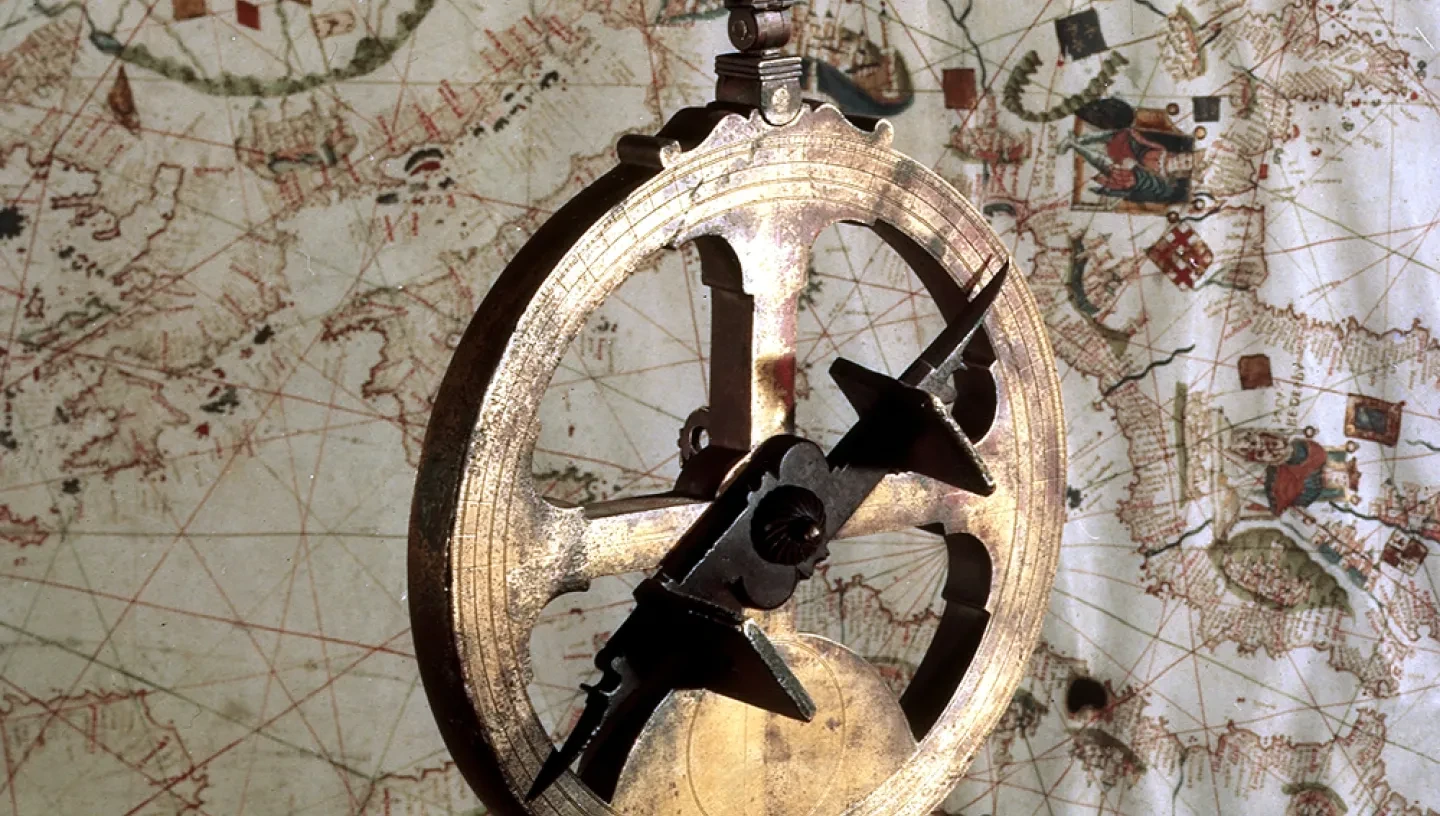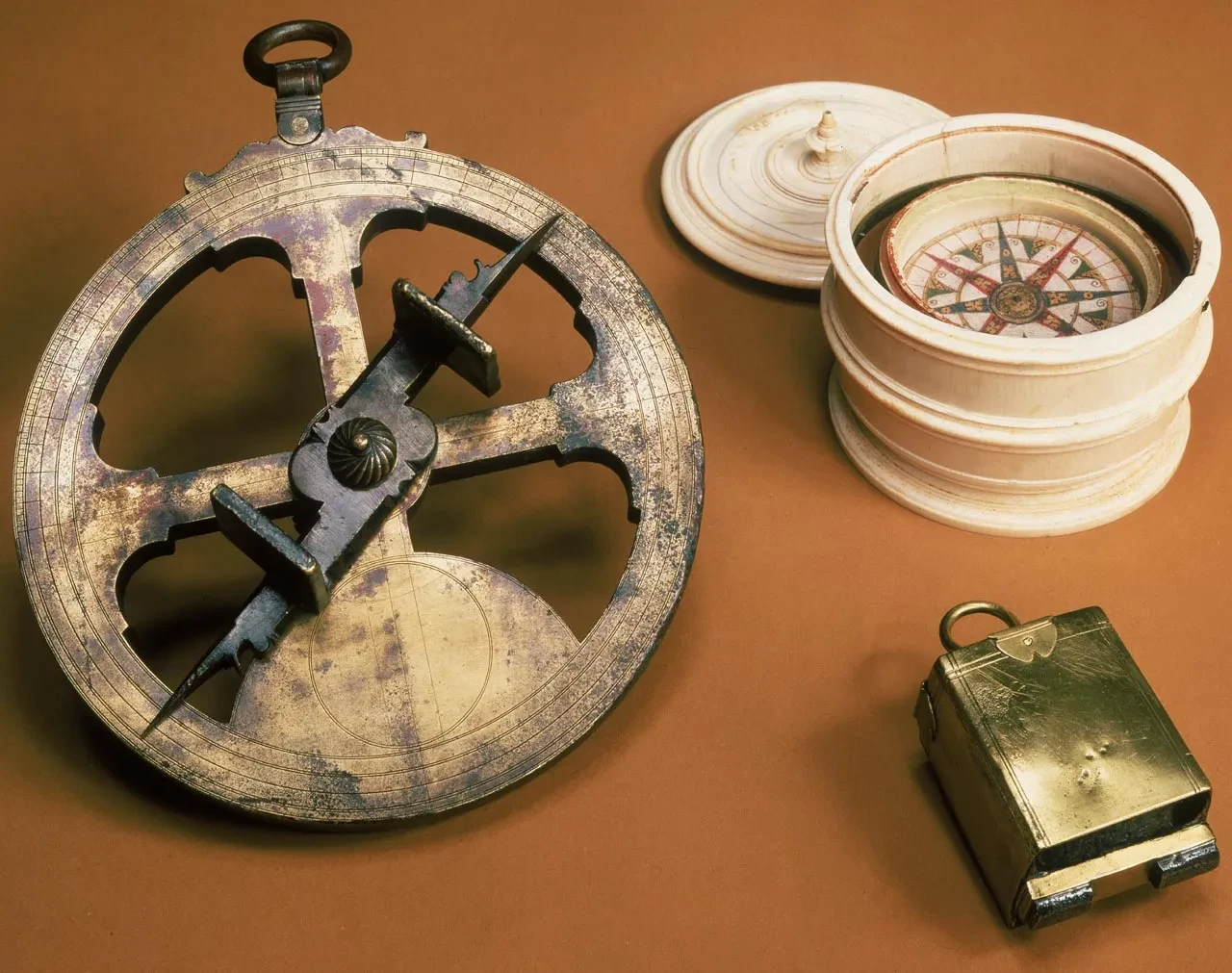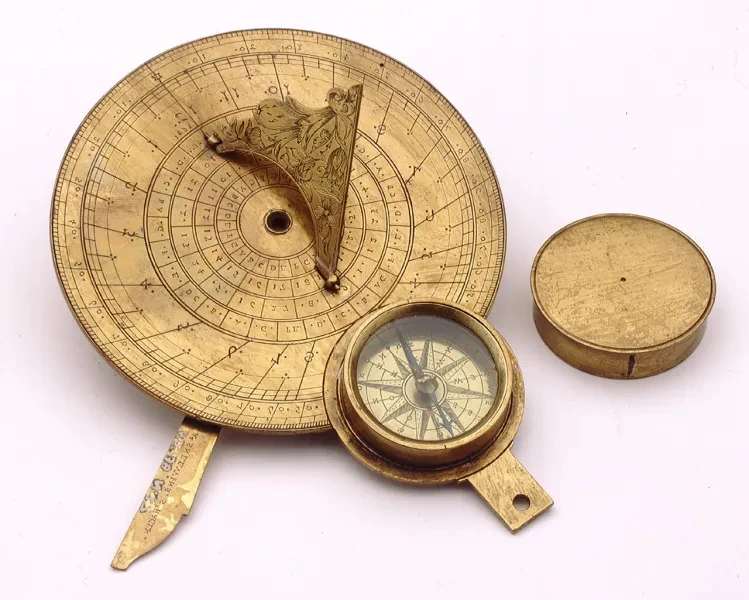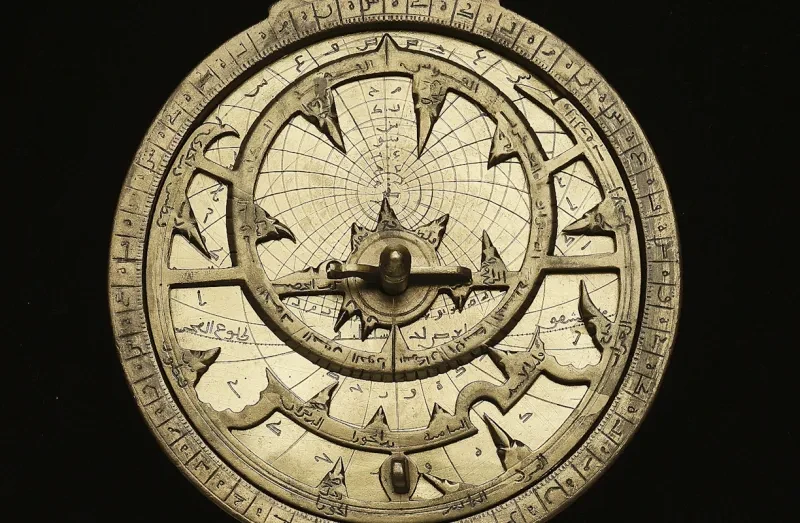
Who was the astrolabe invented by?
No one really knows for sure. The concept goes right back to the Roman Empire, and it has been claimed that it was invented by Hypatia of Alexandria, a female mathematician and philosopher who lived in Egypt in the 4th century AD. However, the idea of the astrolabe is certainly older than that, so it’s more likely that Hypatia was an expert in teaching about and improving the existing technology.
The astrolabe was well known in the Islamic world during the Middle Ages and some of the great Muslim scientists made further improvements. In Europe they were highly prized tools and knowing how to use one was regarded as a bit of a status symbol. The English writer Geoffrey Chaucer, more famous for his Canturbury Tales, wrote A Treatise on the Astrolabe in 1391 which explained how to use the instrument and was possibly written for his son or godson.
What is a mariner’s astrolabe?
The mariner's astrolabe was a simplified version of an instrument originally developed by Arab astronomers for measuring the height of heavenly bodies above the horizon and came into use in navigation by about 1470. In order to keep it steady when used on board ship, the mariner's version was heavier and had parts of the disc cut away to reduce wind resistance.
How was a mariner’s astrolabe used?
The instrument was used to help determine the ship's latitude from the height of the Pole Star or of the sun. At night, the Pole Star was sighted directly through small pinholes in the two vanes mounted on the pivoting alidade or rule. The altitude in degrees was then read off from the scale on the outer edge of the instrument. To measure the Sun's position during the day, the astrolabe was held below the waist and the alidade was adjusted so that a beam of sunlight passed through the top pinhole onto the bottom one.
Portuguese seamen needed to be able to determine latitude when returning home from trading posts in West Africa. As they headed northwards, prevailing winds and currents forced them to sail into the open ocean, away from the visual clues found when land was in sight. To reach their home port, therefore, the navigator would observe the altitude of the Pole Star. Once the observed altitude matched the star’s expected altitude at the destination, they could sail east.
When Vasco da Gama sailed around the tip of Africa to India, 1497–9, he took a small brass astrolabe and a larger wooden one, which he used on land with a tripod for greater accuracy. Christopher Columbus also carried an astrolabe and a quadrant on his famous transatlantic voyage of 1492, although he had difficulty using them on his pitching and rolling ship.
What’s the difference between a sextant and an astrolabe?
A sextant can measure an angle on any plane, and works by a principle of double reflection. It is also far more accurate and can be used for a range of purposes including navigation (finding latitude, longitude, local time). An astrolabe can only measure angles in a vertical plane and was principally used for latitude-finding, although you can also use it for purposes such as finding the height of something.
From the collection: The Greenwich (Valentia) Astrolabe
How do you make an astrolabe?

This example was found in 1845 under a rock on Valentia Island, close to the point off southern Ireland where three ships of the Spanish Armada were wrecked in 1588. The throne is low and moulded. The mater has been made from a single casting, cut out in a wheel shape with a greater weight left in the lower half to help the instrument hang vertically.
The face of the mater is engraved with circles and decorative lines but there are no numbers on the scale, suggesting that the instrument was never completed - perhaps it was one of a number of pieces of unfinished equipment hurried aboard a Spanish vessel in 1588. An alidade is fitted to the face of the instrument and held in place with a pin through its centre, about which it can rotate.


